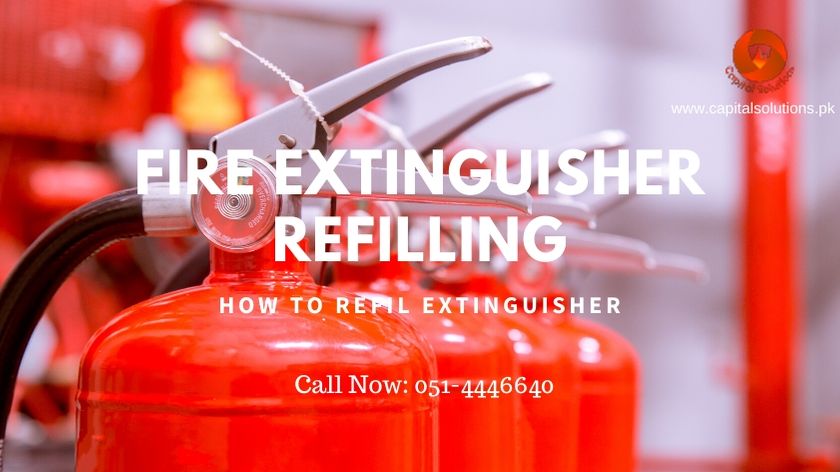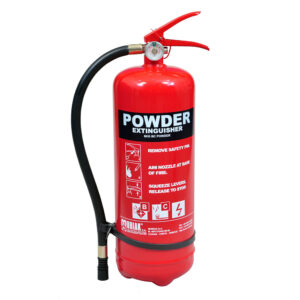

Whenever you use a fire extinguisher in any facility, you might think about its regular maintenance or refilling to use it in the long run. You cannot Refill a fire extinguisher without proper knowledge or technical skill, as it can be hazardous. Therefore, you need to take the help of an experienced fire extinguisher refilling expert in your area. However, knowing the process before contacting the companies is extremely helpful. This blog lists essential processes and steps to recharge your fire cylinder to keep it in good condition. In addition to this, remember extinguishers are different and dependent on the material or agents they use.
If you want to recharge your fire extinguisher on your own, then you need to follow a complete guide in the account of safety measures. The main thing is to choose the right chemical or filler for your fire extinguisher and access to pressurizing equipment. You should also check the fire extinguishers and cylinders properly for any sign of damage and fault.
Preparing to refill a fire extinguisher
Empty your cylinders
First, you have to depressurize and empty your fire cylinder. Typically, the recommended way to an empty fire extinguisher is by holding it vertically and gently squeezing the discharge handle. Release the handle when the pressure gauge shows a “0” reading.
Clean Cylinder Outer Area
Clean the outside of the cylinder with a wet cloth and cleanser. Wipe damp cloth all over the extinguisher and remove all the dirt and dust from it. Preferably use the solvent-free cleaner and warm water.
Remove siphon tube
The Siphon tube was removed from the valve and valve stem. When you transfer, the valve stem spring also gets removed. Avoid leaning over the extinguisher while removing valves; it is not fully pressurized if it comes out with great force.
Clean Valve
Clean the valve and valve assembly properly. Clean everything with a solvent-free cleaner to get proper pressure after refilling. If you find any damage, cracks, or other problems, you must replace it with a new one.
Refilling Fire Extinguisher
The right Chemical or Agent to refill
Purchase the correct type of chemical for your fire extinguisher, whether a water or foam extinguisher, which is A class, or a Dry powder extinguisher (DCP), which is D class. You must find the right chemical according to your fire extinguisher, TYPE, or category.
Refill as Per Instruction
Now, it’s time to refill the fire extinguisher with the specific chemical amount mentioned on the label. Use the plastic funnel to fill the extinguishing agent in the cylinder.
Use of leftover
If you use chemical reclamation to refill the cylinder, you can also insert the leftover extinguishing agent you took out during the cleaning process. You can add new chemicals if the remaining agent cannot fill the cylinder. Don’t mix two different agents.
Reassemble Valve after refilling
After refilling the cylinder, reassemble the valves and valve assembly and set it aside. Tighten the valve stem correctly. Make sure that the pressurized gas does not leak out from the cylinder in any way.
What to do with a residual chemical agent
Remove the chemical from the surface of the fire extinguisher cylinder if there is any residual chemical agent. That dry chemical agent found on the home fire extinguisher cylinder is non-toxic, so you can dispose of it in the trash.
You can also reuse this trash agent to refill your safety cylinder.
Re-pressurized Fire Extinguisher
Place the Cylinder on a Flat and stable Surface
Place the fire extinguisher cylinder in the upright position. Make sure the cylinder is on a flat, stable, and secure surface. The best is to purchase a stand for the fire extinguisher.
Precautions:
Attach the valve to the pressurizing line and give pressure to the line indicated in your owner’s manual. While pressurizing the cylinder, don’t stand before it and avoid connecting the pressure source longer than necessary.
To detect any leakage, if it occurs, spray water on the cylinder’s valve. If there is any leakage, then bubbles will appear on the valve. Don’t remove the pressurizing adopter until you have checked the leakage properly.
Conclusion:
Refilling of fire extinguisher is a technical job and can be dangerous if handled carelessly. Therefore, always take the help of fire safety experts like Capital Solutions. They have years of experience supplying quality firefight safety equipment and complete maintenance, refilling, and installation services. For an instant inquiry or emergency, visit Capital Solutions or call us at 051-4446640 for more help.